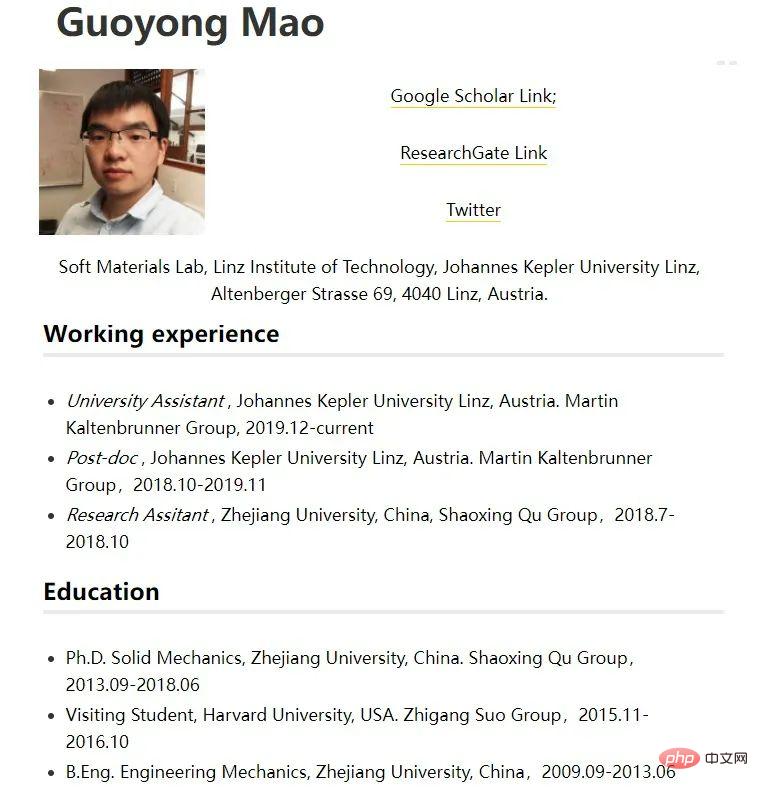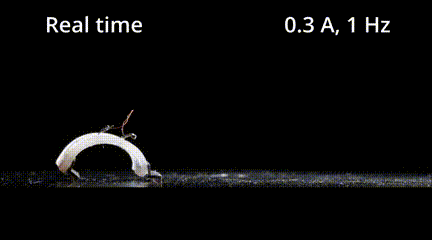
"Why are you chasing me?"
"Because I need syrup urgently."

Now, be careful with your emergency syrup, because the soft robot we are going to introduce today can run twice as fast as a cheetah! It is even faster than an F1 car, and can run at a maximum speed of 70 body lengths/s. In comparison, a cheetah runs at about 25 body lengths/s, and an F1 car runs at 50 body lengths/s (body lengths per second). Long representations of relative speeds can quantify the speed of different organisms at various body sizes).

This pace looks a bit like a naive scallop, but be sure not to blink, otherwise it will disappear.
This is an electromagnetic-driven miniature soft robot developed by the Soft Materials Laboratory team of Johannes Kepler University. It is only the size of a postage stamp. It not only runs super fast, but also Able to swim, climb steps, cross obstacles and transport cargo.


The study was published in the journal Nature Communications under the title "Ultrafast small-scale soft electromagnetic robots”.

The corresponding and first author of the article is Dr. Guoyong Mao from China. He graduated from Zhejiang University with a bachelor's degree and a Ph.D., and is currently working at Johannes Kepler does research at the University.

Many animals in nature can move quickly – such as a cheetah or gazelle, where these features are used to help the animal catch prey or hide from predators. For many years, it has been the goal of scientists to create soft and flexible robots with similar speed capabilities. However, the natural flaws of flexible materials, such as slow response and low strength, make most soft robots move slowly.
Soft electromagnetic elastomer-based robots (SEMR) usually respond quickly and are easy to miniaturize; soft electromagnetic elastomer actuators can be made by printing liquid metal coils on elastic substrates. By applying an electric current to the liquid metal, the actuator movement can be controlled.

But bending motion like this is far from enough. If you want to give the robot a high degree of movement mechanism, further design is needed. The researchers created bilayer actuators by gluing a pre-stretched layer (top) to an undeformed layer (bottom) so that when the bilayer is released, it curls up, taking advantage of the mismatched strain created by the bilayer. curling and releasing to imitate the movement of a cheetah running.


In addition to the body, the design of the robot’s feet is also very important. The designed L-shaped feet can be Run on various flat surfaces including paper, wood, metal, plastic and glass. However, the greater the friction between the foot material and the flat surface, the faster the robot will run, similar to how a cheetah's claws can firmly grasp the ground.

When the robot unfolds, the front feet move forward, while the rear feet are fixed due to mechanical interlocking; then the robot contracts, the front feet are fixed, and the rear feet move toward Pull forward. It reaches ultra-high operating speeds of 70 body lengths/s on 3D corrugated substrates (optimum flat surfaces) and an average of 35 body lengths/s on any other surface.

So far, small robots are driven by a tethered external power supply system. In order to further realize the "freedom" of the robot, the researchers let go of the rope and put a power supply "little bag" on the robot's back - —Customized battery powered printed circuit board (PCB). The robot carrying a schoolbag does not move as fast as before, but it can still reach 2.1 body length/s and swim at a speed of 1.8 body length/s.

Beyond high-speed movement , many animals have broader survival strategies, such as resilience to impacts or falls, the ability to avoid obstacles, the ability to cross terrestrial/aquatic boundaries at will, and the ability to transport prey.
The robot also has these capabilities. The researchers conducted durability tests on it, flattening it with heavy objects during walking, and compressing the main body of the robot with a tensile testing machine. It was found to withstand compressive stresses up to 139 atm (2000 N on the main body).


Resilience is not enough, and overcoming obstacles remains challenging for most small robots . The robot can jump over obstacles by applying a pulsed electrical signal. It first contracts and then tilts its body (storing energy in the process), then expands like a compressed spring (releasing energy) and jumps over the obstacle.


In addition to the terrestrial environment, the small robot also learned to swim, relying on its light weight and relatively low average density, it can float on water without further modification; when driven with square wave current (0.5 A, 20 Hz), the robot swims at a maximum speed of 43 mm/s or 4.8 body length/s, if further improvements are made in the future The speed of the fish will be reached.

Paper portal:
https://www.nature.com/ articles/s41467-022-32123-4
The above is the detailed content of More than twice as fast as a cheetah! Zhejiang University alumnus developed a soft robot that is faster than an F1 racing car and was published in the Nature sub-magazine. For more information, please follow other related articles on the PHP Chinese website!




